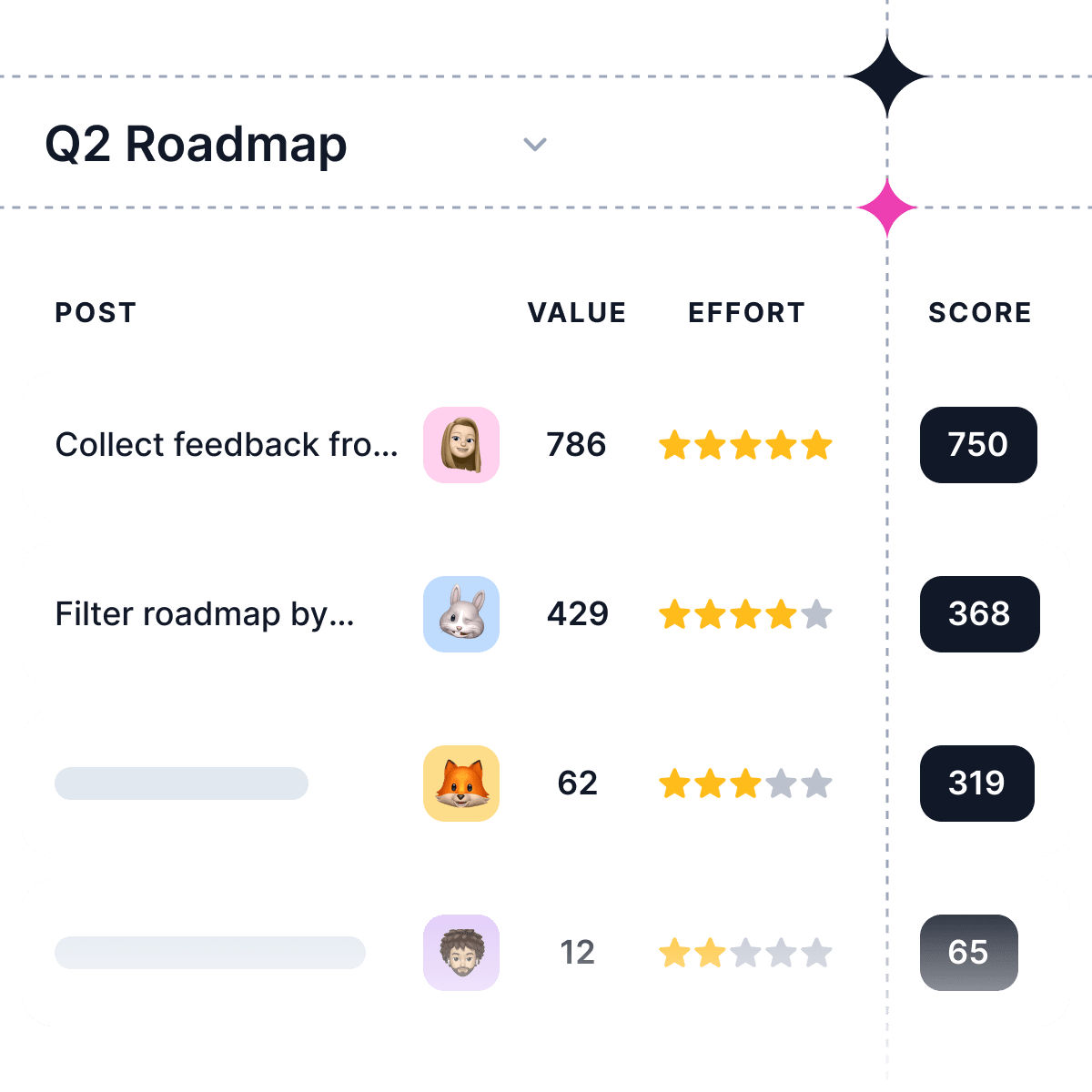This means not just being able to identify patterns in user behavior that can help inform product development but also actually doing something with them making decisions based on those patterns and using them as part of your decision-making process.
Customer insights have become a critical component of any successful business. As a result, companies are increasingly looking to collect and analyze data about their customers to improve the way they market products or services. But not all customer insights are created equal and some can be so vague that they're nearly meaningless. The goal of collecting customer feedback should be the actionable insight that improves your business strategy.
In this blog post, we'll identify six ways you can make sure your customer insights are actually useful:
What are customer insights?
Customer insights are a valuable way of understanding your customers.
They can help you understand what your customers want and what they need, which will help you improve your product or service.
In addition to helping you make better business decisions, they allow you to build better products that users actually want.
What is customer insights analysis?
Customer insights analysis is the process of distilling customer feedback and data to identify recurring themes that can be used to inform strategic decisions. It's a key step in applying customer insights to business strategy, as it ensures that your organization takes an objective look at the data instead of just relying on intuition or instinct.
Once you've collected all your feedback from different customer feedback tools, there are several different directions you can take when analyzing it:
Understand the problem
Take a closer look at what customers are saying about their problems with your product or service. Do they see them as being caused by factors external to themselves or internal? Are any demographic groups more likely than others to blame themselves for their problems? If so, why do you think this might be? How does this help inform how you'll solve these problems?
Understand the solution
How would people describe a perfect solution to this problem? What characteristics would such an ideal solution have? What goals would it accomplish for them personally and professionally? How could we build something like this ourselves while still remaining profitable as a company (or using our strengths)?
Understand competitive landscape
Who else has tried solving these same issues before us; what were their results like; how do they compare with ours today (both good and bad)? What advantages did each option provide its users over ours today? How did competitors try addressing challenges similar to ours (and fail) - why didn't those strategies work well enough for most customers' needs?"
6 ways to analyze customer insights
1. Have a clear vision of the ideal end result.
The first step to creating actionable customer insight is to have a clear vision of the end result you want to achieve. This is not as simple as it seems.
To be specific, your goal should be defined in measurable terms. For example, instead of saying “We want more customers,” say “We want 10% more revenue from new customers within the next three months.” This gives the team something to shoot for and makes it easy for everyone involved to see whether or not they're on track with their goals (and what steps they need to take next).
Of course, setting ambitious goals that are too far off can also lead you astray so start small! If this sounds like something you could achieve within three months or less, then do so! But if it seems like it'll take longer than six months (say 12 or 18), then think about breaking up those larger goals into smaller ones that can be achieved over shorter periods (like six-month chunks).
2. Prioritize insights according to urgency, importance, and value
When you're working with customer insights, it's helpful to prioritize feedback according to urgency, importance, and value.
Urgent: These are the insights that must be acted on immediately. If a business were about to miss a vital deadline for its next product launch, for example, then this would be an urgent insight. They'll want to know who is missing this deadline and what can be done about it quickly so that they don't miss their date with destiny!
Important: These are insights that will help the business make better decisions in the future. For example, if users were found entering data into an app using only one hand because of pain or injury (a common problem among many smartphone users), then this could be considered an important insight since it could affect how well people use your product.
Valuable: This category includes all other types of intelligence gathered from users whether they're related directly or indirectly and any other information required by stakeholders outside marketing teams such as executives at headquarters or board members tasked with making funding decisions based on performance metrics tracked over time. So while valuable may not seem as urgent or important as urgent or important in some cases (like when trying hard enough might still get things done) there's no reason why we shouldn't keep collecting data until all three categories have been filled out thoroughly enough for everyone involved!
3. Be Selective With Your Data
Selecting data is important. You can't act on all of your customer insights, as you'll be paralyzed by the volume of information available to you. So, it's important to know which customer insights are most useful and actionable for your business.
Some types of customer insight are more useful than others:
-
Useful: Customer feedback about product features or functionality.
Unusable: Customer feedback about pricing changes
-
Useful: Customer behavior across different channels (e.g., web and app)
Unusable: The average age of customers who visit your site
4. Establish a holistic framework for prioritizing insights.
Customer insights are not all created equal. Some are more important than others and some are more urgent. Some are more valuable, actionable, accessible, feasible, or sustainable.
To establish a holistic framework for prioritizing your customer insights and make sure you're spending time on the right ones, use this framework:
-
Most important (to what end?)
-
Most urgent (when is it needed?)
-
Most valuable to customers/businesses (how will they react?) Most actionable by us as a company? How much knowledge do we need to act on this insight? How much will it cost us if we don't act on this insight? What data do we already have access to that could help us make decisions based on these insights?
5. Develop a mindset in which every insight has the potential to be actionable.
To make customer insights actionable, you need to develop a mindset in which every customer insight has the potential to be actionable. This is best done by thinking about your business from the customer’s perspective and considering how each of your products or services can be improved based on those insights.
If you don't already have one, create a clear vision of what success looks like for your company what does it look like for customers? How do they feel when they reach that vision? What will they say about their experiences with your company? How will they interact with you online or offline?
Once you have this vision, prioritize each insight according to urgency (how quickly it needs to be addressed), importance (the effect if left unresolved), and value (the cost of addressing).
Next, create a holistic framework for prioritizing insights based on these three core dimensions:
-
The first step in making customer insights actionable is developing a mindset that every insight has the potential to be actionable customer insights. This will help you prioritize your insights according to urgency, importance, and value so that you can make more informed decisions about what will have the most impact on your business goals and objectives.
-
The second step is establishing a holistic framework for prioritizing insights so that they are categorized by their level of maturity (early stage vs late stage) as well as their ability to contribute toward achieving key future business outcomes/objectives such as revenue growth/profitability or acquisition growth etc., thus enabling companies with limited resources at their disposal move towards making these key decisions quickly.
6. Build a culture that rewards action.
The best way to create a culture that rewards action is to take the first step yourself. For example, if you want your team members to share their insights with others, be sure that you're sharing your own insights too. If you want them to get more out of their insights by acting on them and creating something new, then be sure that you're doing the same thing yourself.
In general, people are more likely to do something if they know there is a reward for it and it can be anything from a pat on the back or an excited high-five all the way up through cash incentives so make sure there's always some kind of reward available for anyone who takes action in response to customer insight.
Create an environment of trust
Create an environment of trust where users are eager to share information with you that will make your product more valuable for them.
To make the most of user feedback, it’s important to create an environment where users are eager to share information with you. Here are a few tips for doing so:
-
Be transparent about what you do and don't know. Don’t be afraid to admit that you don't have all the answers yet. This will help your users feel more comfortable sharing their thoughts with you and will also let them know that they can trust what they say is going to be used in a way that benefits them as well as your company.
-
Be honest about mistakes made in the past. People are less likely to respond negatively if they realize that you've made the same mistake before and learned from it than if they think something was an isolated incident without any impact on future planning or development plans it shows humanness! And remember: even though mistakes were made, there's no need for anyone here but us (and maybe our teams) to ever find out about them... unless it becomes relevant data for improving our products/services/processes down the line (which might happen). It's best not to mention these things unless necessary since many people won't care anyway - especially if there weren't any real consequences involved."
Conclusion
In summary, customer insights can be a powerful tool for any business to use. However, if you want to make sure that the insights you get are actionable and meaningful, it’s important to put in some work upfront.
This involves conducting detailed surveys and interviews with customers so they can give you feedback on how they actually feel about your product or service. The end result will be data that are more accurate and easier to digest than just taking their word for it.






